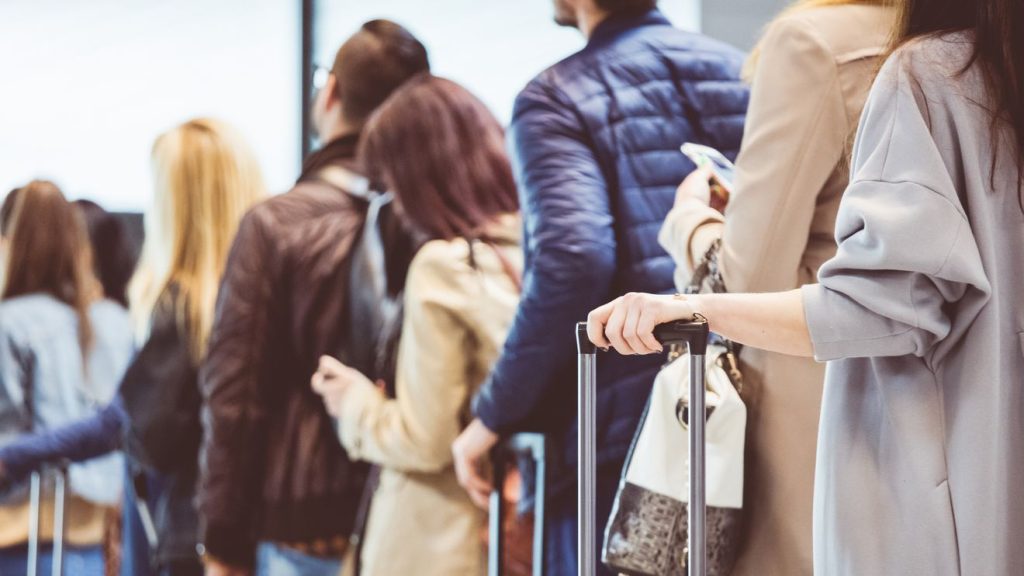With its newly revealed plan to change its airplane-boarding process, United Airlines
UAL,
-9.67%
is clearly hoping to speed things up and relieve the bottlenecks that have long vexed passengers.
But industry experts MarketWatch spoke with say the new plan is far from the ideal solution.
United’s plan, which the airline says it has tested, is known in the industry as Wilma — which stands for first boarding passengers seated by a window (W), followed by those seated in the middle (M) and concluding with those seated on the aisle (A). Passengers in first or business class or those with special needs or who have gained status through frequent-flyer or credit-card programs will still board ahead of the rest, however.
United will introduce Wilma starting Oct. 26, the carrier says. It notes that the new system can save minutes of boarding time.
Experts say Wilma is certainly a speedier method than the more traditional one of simply boarding passengers from the back of the plane to the front. But a revised version of Wilma could be even better, they argue.
“There is room for improvement,” said Jason Steffen, an assistant professor of physics and astronomy at the University of Nevada, Las Vegas, who has written a series of research papers on the boarding process.
Steffen’s own preferred method — in the airline world it’s actually known as the Steffen Method — is to board passengers in the same window, middle, aisle order. But within each group, he limits how many passengers can board at one time — passengers with window seats in odd-numbered rows might go ahead of passengers with window seats in even-numbered rows, for instance.
The reason for spacing things out by creating these subgroups, Steffen explained, is that people need room to maneuver their bags into the overhead bins. If they’re standing close together in the aisle, it still creates a bottleneck by slowing down the bin loading, Steffen argues.
Another speedier method than Wilma, experts say, is the kind of more randomly styled boarding process that Southwest Airlines
LUV,
-4.23%
uses. Under that system, passengers don’t have assigned seats, but board in different groups and then claim whatever spot they can find.
The random approach is faster, experts note, because passengers opt to spread out. Again, it’s all about avoiding those bottlenecks, especially with the bin stuffing.
So why has United opted for Wilma over other approaches? Lots of reasons, experts say.
For starters, the Steffen Method can create its own confusion by increasing the number of boarding groups. And it could test the limitations of United’s boarding-system software, said Harry Harteveldt, an analyst with Atmosphere Research Group, a travel-advisory firm.
And while the Southwest method may be fast, it’s not exactly the way many passengers want to travel.
“People prefer assigned seats,” said Harteveldt.
On top of that, if United still allows so many different groups to board ahead of the Wilma group, it’s working against its goal to speed things up, experts note.
“‘There’s this constant battle between wanting to do something that raises revenue and something that improves customer experience.’”
That’s especially true because the early boarders now include plenty of passengers in economy seats spread throughout the plane, Hareveldt said, where in the past they tended to be those seated in first or business class.
As Harteveldt explained, if there’s an early boarder who is sitting on the aisle in economy, that’s going to create a bottleneck when a passenger with a window or middle seat in that same row gets on the plane and there’s a shuffle as everyone finds their place.
But don’t expect United or any other airline to do away with the preferred boarding systems it has in place, said Robert Mann, a former airline-industry executive who’s now an industry consultant.
That’s because the airlines make money from selling preferred access or win customer loyalty by granting certain flyers such access. In other words, there may be a need for speed in boarding, but that can lose out to the almighty dollar.
“There’s this constant battle between wanting to do something that raises revenue and something that improves customer experience,” Mann said.
A United spokesperson declined to comment to MarketWatch about why the carrier chose Wilma over other boarding systems.
Read the full article here
